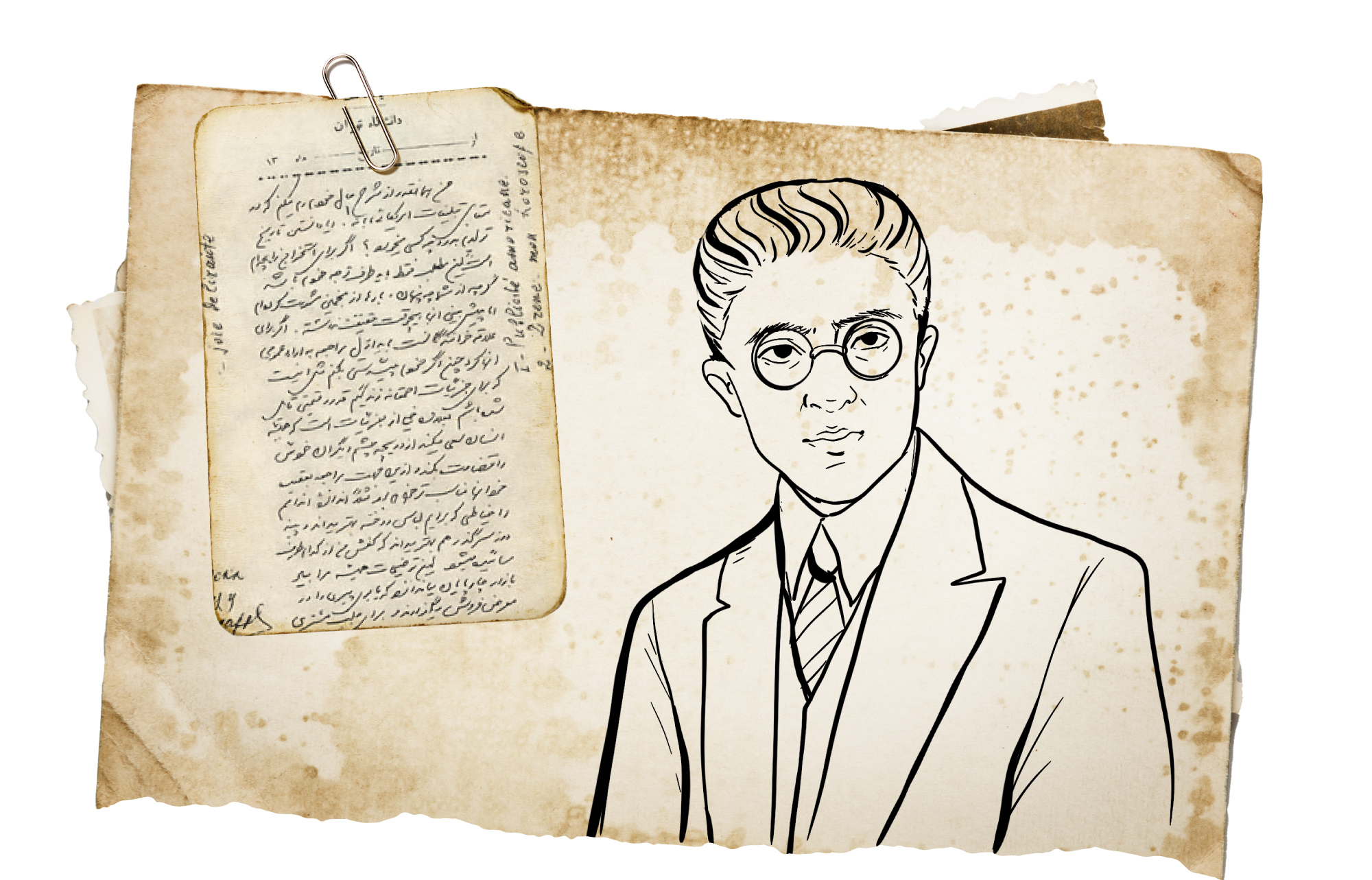
In an elemental accumulation that established a general behavioral structure for the Persians
The Arabs and Islam are the most prominent psychological complexes of Sadeq Hedayat in his writings
The Persian hatred towards everything that is Arab cannot be linked to the political considerations only, given that the hatred with which the Persians were saturated made this behavior part of a racist doctrine that had accumulated for centuries and then it contributed to the extremism of the “ego” of the Persians and formed a deep gap that is difficult to treat.
The Persian hatred was not limited to politicians, but extended to some opponents of politicians in Iran, which proves that the racial accumulations have turned into a part of the main behavioral and personal structure of the Persian race, which seems to have found in the thesis of the Aryan people the fulfillment of a deep feeling thirsting for that sense of importance and exclusion.
Among these writers who combined their hatred of the Persian regime and their hatred of the Arabs was the writer Sadeq Hedayat, who lived a short life that everyone agreed on its misery and its bad ending. It ended with his suicide in his home with a gas pipe leaving a letter and a sum of one thousand French francs to those who would discover his body. He wrote in his letter: “It must be given to the parents as a little compensation for the pain I might have caused them”.
Hedayat is best known for his study of the history of Iran in the pre-Islamic period and was conversant with the Middle Persian language, and the Arabs and Islam remained a central problem in his writings. Although Sadeq Hedayat’s books were not spread during his life among the Persian readers, they spread widely after his death, especially the books in which he dealt with the life of Omar Khayyam and his Rubaiyat in addition to the novel of “The Blind Owl”.
Hedayat contributed to the formation of a contemporary Iranian intellectual, literary and political discourse that despised the Arab element, exalted the Persian element, and yearned for the history of Iran before Islam. Hedayat, along with a group of contemporary Persian writers, has contributed to erasing the national identity of the ethnic groups that make up more than 60% of Iran’s population, especially Azeri-Turkish nationalism, to which the Supreme Leader of the Iranian Revolution, Ali Khamenei, belongs.
Sadeq Hedayat not only portrayed a racist image against the Arabs, but also claimed that Omar Khayyam shared the same view with him, which is the claim he referred to in his introduction to the Rubaiyat, as he says: “Through his angry laughs and allusions to Iran’s past, it is clear that he hated these Arab thugs and deeply despised their vulgar ideas”.
Hedayat was obsessed with hatred of the Arabs even when he was seriously considering suicide. He said: “If I die, they will take me to the mosque of Paris and hand my body over to the Arabs who do not worship any God, so I will die twice! I can’t stand seeing them”. In one of his stories, Hedayat continues to target the Arabs in a prejudiced language that is dominated by subjectivity. He says: “The Arabs, especially those who run barefoot behind lizards, have no artistic thought in their heads and what is known as their art actually belongs to other peoples. Arab architecture is an absurd imitation of Iranian architecture”.
Hedayat excelled in trying to degrade the Arabs and present them as an unproductive race that does not know how to live and has no luck in development, art, culture or science. Since Hedayat’s thought and personality do not recognize the religious dimension, he ignored the fact that Allah chose the Arabs to deliver the message of Islam and revealed to them an Arabic book by which a billion and a half Muslims worship. What is confirmed by reading the writings of Hedayat is that he hated Islam as a whole.
The least that can be said about Hedayat’s descriptions is that they are prejudiced, like the general feeling of the Persians towards the Arabs, which is what made him describe the Arab as “Barefoot, with a black face, blazing eyes, and a light beard. Arabs dressed in long, loose clothes with stupid faces under fezzes and sly expressions under turbans. There were Arab women with filthy tattooed faces, blazing eyes, and rings piercing their nostrils”.
In the end, Hedayat was the product of a racist, arrogant Persian behavioral structure directed against the Arabs. Hence, we can identify one of the factors of the Persian-Arab conflict that still drives the political decision system in Iran.


- Ibrahim Al-Aris, Omar Khayyam and his poems, by Sadeq Hedayat: The first Iranian study about the author of the Rubaiyat, an article published on hafryat website at: https://hafryat.com.
- Jihad Fadel, The Arabs from the Persian point of view, an article on the website of Al-Riyadh newspaper, Saudi Arabia, Issue. 15665, May 15 (2011).
- Joya Saad, The Image of the Arabs in Modern Persian Literature (Damascus: Cadmus for Publishing and Distribution, 2007).
- Sadeq Hedayat, Isfahan is Half of The World, translated by: Ahmed Haidari (Cairo: Masarat for Publishing and Distribution, 2015).
- Youssef Azizi, Sadeq Hedayat, the father of the Persian novel and the spreader of hatred against the Arabs, an article published on The Arab website at: https://alarab.co.uk.

